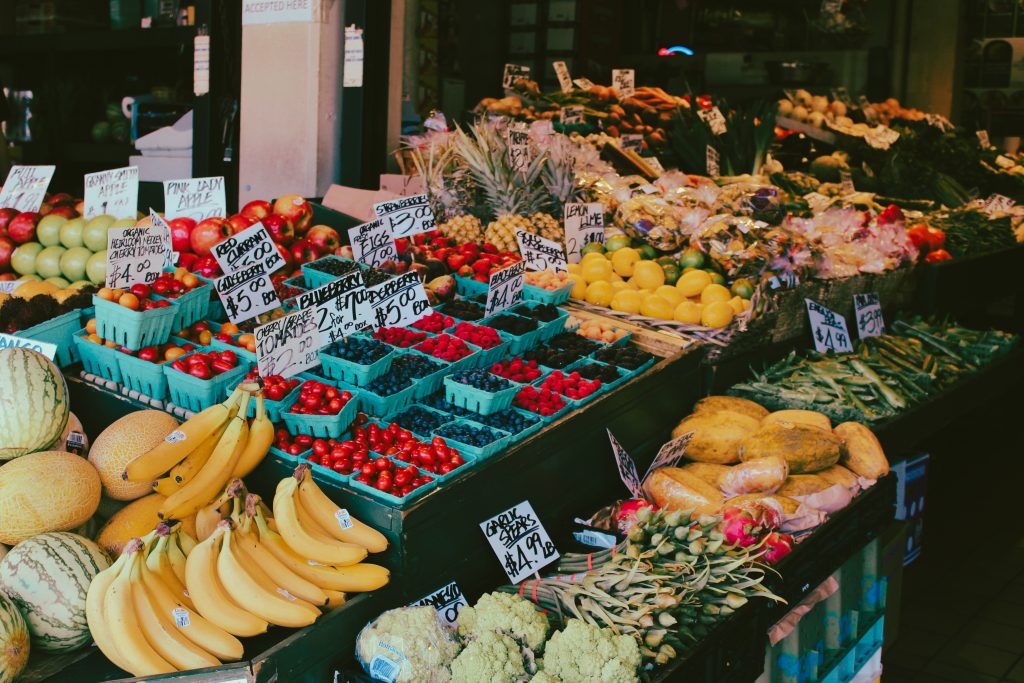
It might be difficult to stay within your budget and yet satisfy your nutritional needs when food costs rise. These are some suggestions for cutting your grocery bill:
- Plan your meals
- Buy in bulk
- Shop at discount stores and check shelf prices
- Use coupons and store loyalty programs
- Buy generic brands:
- Cook at home
- Use meat as a condiment
- Buy produce in season
- Avoid processed foods
- Avoid waste
1. Plan your meals
Based on what’s on sale and what’s in your cupboard, plan your meals for the coming week. To save money, make a list of the ingredients you’ll need and adhere to it when you go shopping. Having a weekly supper menu (including a few lunches and breakfasts) encourages you to prepare more meals at home rather than ordering takeout or choosing other more expensive choices. It doesn’t have to be complicated, but making a list of a few recipes and then going shopping for the necessary goods is a wonderful way to cut costs at the grocery store.
2. Buy in bulk
Bulk purchases can result in long-term financial savings, especially for big families. Be on the lookout for long-lasting bulk foods like grains, beans, and nuts. Groceries may be found in big box retailers like Costco, Sam’s Club, and BJ’s at a terrific price. Purchasing larger quantities at your neighborhood supermarket can help you save money even if you don’t have a membership to a warehouse store or much space at home to keep additional goods.
3. Shop at discount stores and check shelf prices
Shopping around will help you locate the best pricing because discount retailers like Aldi and Lidl offer cheaper costs than typical grocery stores. Smaller sizes cost more, as indicated by unit pricing, which is weight-based costs. Comparing brands using unit prices will help you determine which is the most cost-effective option for your budget.
4. Use coupons and store loyalty programs
You may save money on purchases by using the discounts and reward programs that grocery retailers provide. Go through the weekly sale fliers and the website or app for your shop to find bargains and discounts. If you purchase online, you may include digital coupons in your order or sort the goods based on discounts. Make sure to register for loyalty points at each grocery shop you frequent and look for coupons for the items you frequently purchase. My preferred method is to first look at what is on sale, then include some of those items in my weekly meal plan.
5. Buy generic brands
Generic or store-brand products are becoming increasingly popular due to their affordability and quality. These products offer the same quality and functionality as name-brand products, but at a significantly lower cost. Additionally, they are often produced by the same manufacturers as their name-brand counterparts, meaning that the quality of the product is comparable to its name-brand counterpart. This is especially true for over-the-counter medications, where the active ingredients are the same in both name-brand and generic versions. Generic brands offer the same quality and functionality as name-brand products, but at a lower cost, making them a smart way to save money without compromising on quality.
They have improved their packaging and branding to appeal to consumers and are investing more in their packaging and marketing. When it comes to food products, generic brands are often just as good as name brands, with the only difference being the label. This is especially true for staples such as flour, sugar, and canned goods, where there is little variation in quality between different brands. Consumers can feel confident in their purchases, knowing that they are getting a good product at a fair price. As generic brands continue to improve their packaging, we can expect to see more consumers opting for these products over name-brand alternatives.
6. Cook at home
Cooking at home is often cheaper than eating out. Invest in basic kitchen equipment like pots, pans, and a slow cooker to make cooking at home easier. Cooking at home is a great way to save money and eat healthier. Eating out can be expensive, and often, you don’t know exactly what ingredients are being used to prepare your food. Cooking at home, on the other hand, allows you to control the ingredients, portion sizes, and cost.
One of the biggest advantages of cooking at home is that it is often much cheaper than eating out. When you cook at home, you can purchase ingredients in bulk, which is usually less expensive than buying pre-made meals or going out to eat. Additionally, you can make use of leftovers and meal prep in advance, which can further reduce food waste and save you money.
Investing in basic kitchen equipment is a smart way to make cooking at home easier and more enjoyable. Items such as pots, pans, and a slow cooker can help you prepare a variety of meals with minimal effort. With a slow cooker, for example, you can throw in ingredients in the morning and come home to a hot, delicious meal in the evening. A set of quality pots and pans can be used for everything from boiling pasta to sautéing vegetables and searing meat.
Cooking at home also allows you to control the quality of the ingredients you are using. You can choose fresh, whole ingredients and avoid preservatives, additives, and excessive amounts of salt and sugar that are often found in pre-made meals. This can help you eat healthier and feel better overall.
Finally, cooking at home can be a fun and rewarding experience. You can experiment with different flavors and cuisines, and involve friends and family in the cooking process. It’s also a great way to develop new skills and learn more about nutrition and healthy eating habits.
In conclusion, cooking at home is a cost-effective and healthy way to enjoy meals. By investing in basic kitchen equipment and using fresh, whole ingredients, you can save money and have greater control over what you eat. Whether you’re a seasoned cook or a beginner, cooking at home is a rewarding experience that can lead to better health and a happier wallet.
7. Use meat as a condiment
There are methods to save money without giving up meat even though it is sometimes one of the more costly things on your grocery list. Choosing less costly cuts of meat can help save costs because plant-based proteins are less expensive than meat. Stocking up when it’s on sale can make sense if you have the freezer room. Meals that combine meat with vegetables and grains can help you extend your meat supply. Little things over time can help you save money; it doesn’t have to be all or nothing.
8. Buy produce in season
Buying produce in season is a smart way to save money on groceries while also enjoying fresh, flavorful fruits and vegetables. In-season produce is more abundant and less expensive than out-of-season produce, and it is often fresher and tastier. It is important to know what fruits and vegetables are in season at different times of the year and to look for good deals and sales at grocery stores and farmers’ markets. Buying in season also supports local agriculture and helps to reduce the environmental impact of food transportation. By keeping an eye out for sales on in-season produce and visiting farmers’ markets, you can stretch your grocery budget further and support local agriculture.
9. Avoid processed foods
In addition to being more expensive, processed meals are frequently less healthful than whole foods like grains, fruits, and vegetables. As a nutritionist, I encourage individuals to eat more fruits and vegetables since they may extend a person’s food budget while still providing adequate nutrients. Saving money while still consuming fruits and veggies that are frozen, canned, or dried is a terrific way to obtain your daily dose of vitamins, minerals, fiber, and antioxidants. Search for products with less salt and sugar added, and think about replacing an expensive fruit or vegetable with a less expensive alternative. Use up your fragile produce first, and make sure you consume everything you buy. Try freezing produce or adding anything about to spoil to soups or fried foods.
10. Avoid waste
Use leftovers in new recipes, freeze them for later use, or repurpose them for another meal to save food waste. To save money, check your freezer and pantry before making a list and going shopping. Making an inventory is another way to consume the food before it spoils. Using these components in a single meal can save expenses.
